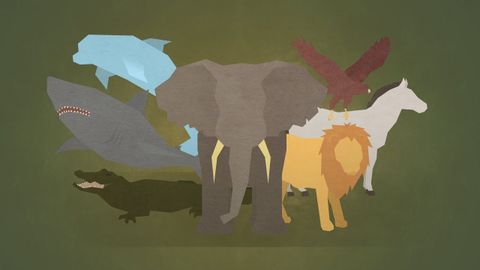10大事實 - 動物 (Top 10 Facts - Animals)
Celine Liu 發佈於 2021 年 01 月 14 日  沒有此條件下的單字
沒有此條件下的單字US /əˈbɪlɪti/
・
UK /ə'bɪlətɪ/
US /ˈkepəbəl/
・
UK /'keɪpəbl/
US /hjuˈmænɪti/
・
UK /hju:ˈmænəti/
- n. (u.)人道的;人道精神;人性
- n. (c./u.)人類
- n. pl.人文學科
- n. (c./u.)自尊 ; 自尊心;自豪,驕傲;傲慢,自大
- v.t./i.標榜
- n. (c.)獅群

